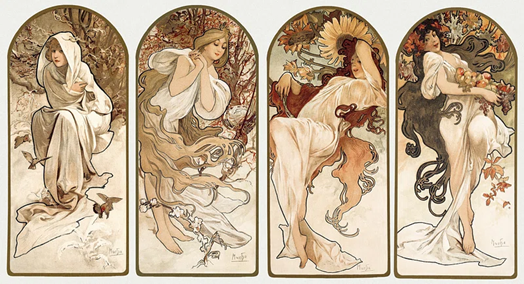Did You Know? Nancy’s Artistic Legacy Revealed
Exploring Nancy’s Place in Global History – And Why It Matters to Cincinnati
If you’ve ever explored Cincinnati’s historic architecture, visited the Taft Museum, or wandered through the art-lined halls of the Cincinnati Art Museum, you may already feel a connection to something bigger—something European, even French. That’s no coincidence. As Cincinnati’s Sister City since 1991, Nancy, France, shares more than a symbolic relationship with the Queen City. Our cultural and artistic roots intertwine, and there’s no better example of that than one defining movement born in Nancy: Art Nouveau.
But before we get into that, let’s test your knowledge. Which of the following originated in Nancy, France?
a. Rookwood Pottery

b. The French Revolution

c. The Art Nouveau Movement

If you guessed c. The Art Nouveau Movement, you’re absolutely right. But what about the others? Let’s take a quick dive into the origins of each:
Rookwood Pottery – Cincinnati’s Claim to Fame
Founded in 1880 by Maria Longworth Nichols Storer, Rookwood Pottery is a proud product of Cincinnati, Ohio. Named after her father’s estate and inspired by Japanese and European ceramics, Rookwood became one of the most respected ceramics companies in the U.S., particularly known for its rich glazes and contributions to the American Arts and Crafts movement. While it didn’t come from Nancy, it certainly shares a kindred spirit with the artistic movements brewing in France at the same time.
![How to Identify Rookwood Pottery Marks [Kovels.com]](https://i.ytimg.com/vi/8UaLsmLo9Vw/hq720.jpg?sqp=-oaymwEhCK4FEIIDSFryq4qpAxMIARUAAAAAGAElAADIQj0AgKJD&rs=AOn4CLA_QzMXhERXiI0fngDHQUtw1_-aRA)
The French Revolution – A Parisian Uprising
Though the effects of the French Revolution rippled across all of France—including Nancy—this historic revolt erupted in Paris in 1789. It marked the end of absolute monarchy and reshaped not only France but the political fabric of Europe. While Nancy was influenced by the Revolution’s consequences, it was not the movement’s birthplace.

The Art Nouveau Movement – Born in Nancy
Here’s where Nancy steps into the spotlight. In the late 19th century, Nancy became a flourishing hub for Art Nouveau, a decorative arts movement characterized by organic forms, flowing lines, and natural motifs. This artistic shift was a response to the rigid academic art of the time and was seen across architecture, glasswork, furniture, and graphic arts.
The École de Nancy (School of Nancy) was at the heart of it all, with artists like Émile Gallé, Louis Majorelle, and the Daum brothers transforming the city into a canvas of elegant curves and botanical inspiration. Walk through Nancy today and you’ll still see the legacy of Art Nouveau in its buildings, museums, and even street signage.
This aesthetic vision deeply resonates with Cincinnati’s own embrace of artistic beauty—seen in our historic Over-the-Rhine district, the design of Union Terminal, and even modern art installations around the city. It’s no wonder that Nancy and Cincinnati are cultural siblings.

Why This Matters to Our Sister City Bond
By learning more about Nancy’s influence on global art and comparing it with Cincinnati’s own creative achievements, we strengthen our shared identity. Art connects us across centuries and continents—and celebrating that is part of what makes our Sister City relationship so meaningful.
Want to See More of Nancy’s Art Nouveau Wonders?
Check out the Musée de l'École de Nancy or plan a walking tour of the city’s iconic Art Nouveau landmarks. And keep following us for more cultural tidbits and history lessons that bring our two cities closer together.
.jpg?width=150&height=84&name=Salesmsg%20Account%20Access%20Steps%20(1).jpg)

